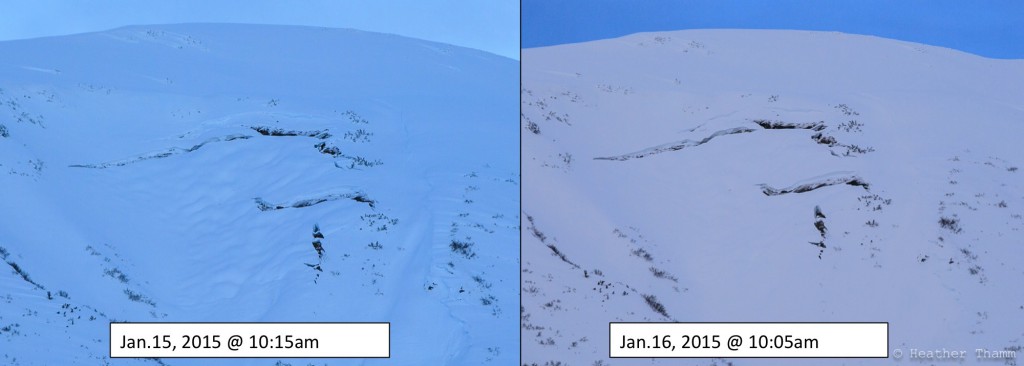Turnagain Pass
|
|
Today a MODERATE avalanche danger exists both in the Alpine and at Treeline. Above 2500′ triggering an isolated wind slab (1-2′ thick) could be possible on steep leeward terrain features. Below 2500′ in the Treeline zone, Glide cracks can release naturally and without warning. These problems can be avoided by carefully managing the terrain, assessing the snow, and avoiding zones with known glide cracks.
Should storm totals exceed the forecasted 3-5 € of snow today the danger could rise to CONSIDERABLE. Monitor changing conditions and alter your plans accordingly.
A LOW avalanche danger exists below 1000′ where triggering an avalanche is unlikely.
*In Summit Lake, where a poor snow structure exists, the avalanche problem warrants extra caution. See yesterday’s observation fron Fresno Ridge and visit our weekly Summit Summary for recent snowpack observations.
Our condolences go out to the family and friends of a snowboarder buried and killed in an avalanche yesterday at Hatcher Pass. We also want to extend a heartfelt €˜Thank You’ to the many people who participated in the prompt rescue efforts. Visit the Hatcher Pass Avalanche Center for more information about avalanche details and click HERE for the ADN article.




